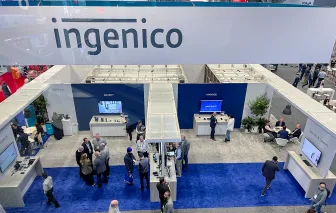Maintain the Health of Your Payment Tech Investment with Estate Management

“Begin with the end in mind” is keystone habit number two from Stephen Covey’s 7 Habits of Highly Effective People. For an ISV or merchant with large payment infrastructure, the chances are high that they will eventually need direct access to their fleet of payment terminals.
Technical teams may be asked to update a newer EMV or alternative payment standard, schedule seasonal advertising, or track terminals for a P2PE Validated Solution. Without an effective plan in place to manage all terminals can result in inefficiencies for the business in many ways:
- Increase in Cost: When many IT systems are involved, businesses will likely incur additional costs and encounter more complexity in performing software updates to their payment terminals. If remote updates fail, technical teams could be faced with the choice of forgoing updates or sending a technician onsite.
- Delays in Troubleshooting: Ineffective terminal management can lead to delays in troubleshooting when something does go wrong. Even though the payment terminal can report on hardware failures or other issues, your POS system may not be ready to report on early issue indicators. This downtime can adversely affect the business.
When it comes to managing a fleet of payment solutions, ISVs and their merchant customers can face challenges every day. It is a process that can take considerable time, effort and resources from the management of their core business. This is where estate management solutions can help. Estate management solutions provide ISVs and their merchant customers with all the tools they need to overcome operational challenges and gain full control over their payment terminal estate.
Three Reasons to Use Estate Management Solutions
1. Maximize Terminal Uptime
Estate Management solutions provide solution providers a birds-eye view of their entire fleet of terminals. This gives them insight into their performance and allows them to easily check on the device/connection health status. They can effectively troubleshoot issues whether they are proactive or reactive. With predefined alerts, they can detect high-frequency and repeating events over a period and address them before a system failure can occur. This helps maintain the health of the payment terminals and prolongs their lifespan. This helps optimize overall terminal uptime and helps reduce the total cost of ownership (TCO) for the payment solutions businesses have in place.
2. Centralized Updates
As a powerful, web-based portal, estate management solutions allow payment solution providers and their merchant customers to seamlessly track and manage their payment terminals from one centralized platform. This enables proactive and timely updates of all payment solutions across multiple merchant customers and locations simultaneously. It also allows merchants or their solutions provider to monitor and update the entire fleet of terminals including the OS, applications, parameters, call scheduling, security keys and custom content giving them complete control.
3. Optimized IT & Resources
Merchants that opt for estate management solutions can better optimize their IT infrastructure and resources. They keep pace with the latest security updates and PCI regulations and can also focus their resources on their core business instead of getting caught up with maintaining their payment tech.
Manage Your Terminal Estate Effectively
If you are an ISV, estate management solutions are designed to help manage large fleets of payment terminals that will satisfy your merchant customers’ business goals and security requirements. Merchants can easily control and monitor terminal fleet remotely with a single centralized solution that ensures fast and efficient deployment for any terminal content. And in the long run, businesses can uncover issues earlier and improve efficiency among staff.
If you would like to learn more about our estate management solutions, visit this page on our website.
Tim Reidy is a Sales Executive - Retail Channel at Ingenico
Feature Photo by Artem Beliaikin on Unsplash










